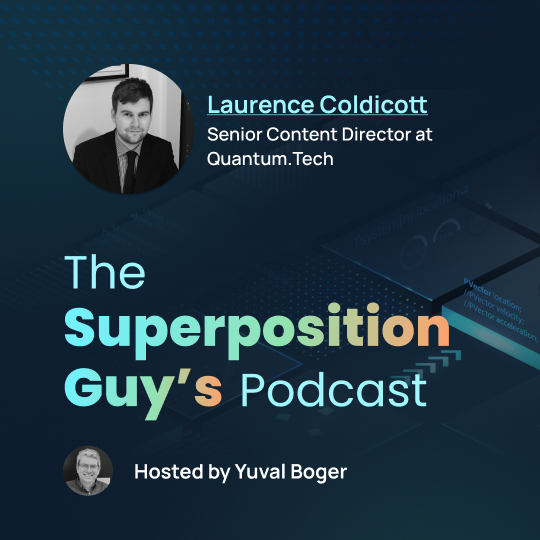Insider Brief
- Haiqu has demonstrated that current quantum computers can detect anomalies in complex datasets more efficiently than classical systems, showing early signs that quantum machine learning may soon deliver real-world advantage.
- The company used IBM’s Quantum Heron processor to encode over 500 features across 128 qubits, enabling faster preprocessing and improved accuracy in financial anomaly detection compared to classical baselines.
- Haiqu’s proprietary quantum embedding technique allows large-scale data to be compactly represented on today’s quantum hardware, potentially accelerating applications in finance, healthcare, and environmental monitoring.
PRESS RELEASE — Haiqu, an emerging quantum software company, has demonstrated that today’s quantum computers could detect anomalies more efficiently than classical systems in classification problems across finance, healthcare, weather and more.
The work, run over the cloud on an IBM Quantum Heron processor, indicates that quantum advantage with quantum machine learning may be possible for large-scale real-world problems.
“The ability to encode high dimensional data with hundreds and even thousands of features enables applications of a new scale, as what the team at Haiqu has experimentally shown on our hardware,” said Jay Gambetta, Director of IBM Research. “Advances like this are what push the industry towards achieving a quantum advantage in the near term.”

Anomaly detection is critical to identifying fraud in financial transactions, irregular trading behavior in the stock market, deviations in patients’ vital signs, unusual weather patterns and more. Classical algorithms struggle to spot meaningful patterns due to the complexity of real-world datasets.
Quantum computing offers a fundamentally different way of representing and processing information, which quantum machine learning (QML) takes advantage of. This may allow it to outperform classical methods in extracting patterns and anomalies in complex datasets.
“Understanding and implementing quantum embedding is an essential part of data analysis on quantum devices,” said Oleksandr Kyriienko, Professor and Chair in Quantum Technologies at the University of Sheffield. “Ultimately, they define the complexity of models and their performance. I’m very happy to see this implemented at an unprecedented scale. Anomaly detection is a very suitable target, since even a smaller improvement in scores can lead to crucial detections or elimination of false positives.”
“Today’s quantum computers are approaching usefulness in specific applications, even if they are still prone to errors,” said Mykola Maksymenko, CTO and co-founder of Haiqu. “With Haiqu’s software, quantum applications can run at a significantly larger scale. This is where the impact of quantum processing of data can become useful, as we see in our research on anomaly detection.”
Haiqu developed a proprietary technique to encode complex, high-dimensional data on quantum processors. The company demonstrated its performance by loading over 500 features into quantum circuits on 128 qubits. The quantum method will scale to larger problems with tens of thousands of features on near term quantum processors.
This efficient conversion of classical datasets into compact quantum circuits enables their use on today’s devices for further processing with quantum algorithms, including QML.
After combining quantum preprocessing with classical machine learning, Haiqu compared this hybrid approach to a classical baseline, employing purely classical embeddings created using random parameters to ensure a fair comparison. This revealed a consistent trend in favor of the quantum-enhanced preprocessing of complex, real-world financial datasets.
IBM’s Quantum Heron processor was used for the quantum preprocessing of the data. The preprocessing time on the quantum device was faster than classically simulating the same computations. Haiqu’s achievement on today’s quantum processors demonstrates that it may be possible to achieve advantage with QML.
“We are not claiming quantum advantage just yet. However, we are providing the clearest empirical signal to date that (1) real-world high-dimensional data can now be loaded onto a quantum computer and (2) QML could soon be useful for processing this data,” said Richard Givhan, CEO and Co-Founder of Haiqu. “Our goal is to provide the industry with tools to seek advantage for themselves on real quantum hardware, and we invite anybody to try this new embedding technology and see what they can do.”
Previous research has been conducted in this area with similar results indicating that quantum methods could improve near-term financial applications. Haiqu’s latest research supports these results with more scalable embeddings which encode more classical data in quantum states, demonstrating more robust, controllable and reproducible results. This work was validated in ideal simulation and on real hardware, indicating a consistent improvement of the quantum approach across different machine learning models.
Future work could explore more complex datasets at an industrially relevant scale for a wider range of problems. Haiqu is now accepting applications for beta testers of Haiqu’s quantum feature embedding on other common analyses, including detecting earthquakes in seismic data, faulty sensors in machines, health issues in medical readings and more.
For more information and technical details about Haiqu’s research in quantum anomaly detection, please see the company’s technical blog, detailing its experiment and results.


















